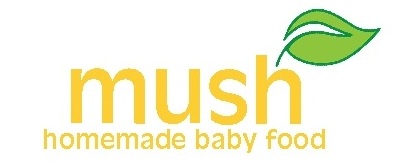Luckily no deaths have been reported involving any of the recalled items, but associated injuries include choking and cuts requiring stitches.
Apparently the tricycles have a protruding key that could cause injury. The high chairs have pegs on the chairs' legs which can cause cuts, and the cars, ramp ways, and infant toys have faulty parts that pose choking hazards.
Check the list below and if you have any of the items, stop using them and call Fischer Price for repair kits and replacement parts. Supposedly the defective items have already been pulled off store shelves.
Contact Fisher-Price for a free replacement kit by calling (800) 432-5437 Monday through Friday between 9 a.m. and 6 p.m. Eastern time, or visit the company's website.
See photos of the recalled toys on the CPSC's website
Products affected by this recall:
Trikes
- 72633 Hot Wheels Trike
- 72639 Barbie™ Butterfly Trike
- 72642 Lil' Kawasaki® Trike
- 72643 Tough Trike
- 72644 Tough Trike
- 72792 Kawasaki Trike
- B8775 Kawasaki® Ninja® Tough Trike
- B8776 Barbie™ Tough Trike
- K6672 Nick Jr./Dora the Explorer Tough Trike
- K6673 Go, Diego, Go! Tough Trike
- M5727 Barbie™ Tough Trike Princess Ride-On
- N6021 Kawasaki Tough Trike
- T6209 Thomas & Friends™ Tough Trike
- V4270 Go, Diego, Go!™ Kid-Tough™ Trike
Rampway
- T4261 Little People® Wheelies™ Stand 'n Play™ Rampway
- V6378 Little People® Wheelies™ Stand 'n Play™ Rampway Gift Set
Infant toys with inflatable balls
- 73408 Baby Playzone™ Crawl & Cruise Playground™
- B2408 Baby Playzone™ Crawl & Slide Arcade™
- C3068 Ocean Wonders™ Kick & Crawl™ Aquarium
- H5704 Baby Gymtastics™ Play Wall
- H8094 Ocean Wonders™ Kick & Crawl™ Aquarium
- J0327 1-2-3 Tetherball
- K0476 Bat & Score Goal™
High Chairs
- 79638 Healthy Care™ High Chair
- 79639 Healthy Care™ High Chair
- 79640 Healthy Care™ High Chair
- 79641 Healthy Care™ High Chair
- B0326 Deluxe Healthy Care™ High Chair
- B2105 Deluxe Healthy Care™ High Chair
- B2875 Healthy Care™ High Chair
- C4630 Healthy Care™ High Chair
- C4632 Link-a-doos™ Deluxe Plus Healthy Care™ High Chair
- C5936 Healthy Care™ High Chair
- G4406 Healthy Care™ High Chair
- G8659 Aquarium Healthy Care High Chair™
- H0796 Deluxe Healthy Care™ High Chair
- H1152 Healthy Care™ High Chair
- H4864 Aquarium Healthy Care™ High Chair
- H7241 Healthy Care™ High Chair
- H8906 Close to Me™ High Chair
- H9178 Easy Clean™ High Chair
- J4011 Easy Clean™ High Chair
- J6292 Easy Clean™ High Chair
- J8229 Easy Clean™ High Chair
- K2927 Rainforest™ Healthy Care™ High Chair
- L1912 Healthy Care™ High Chair










